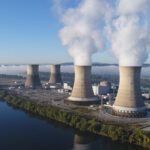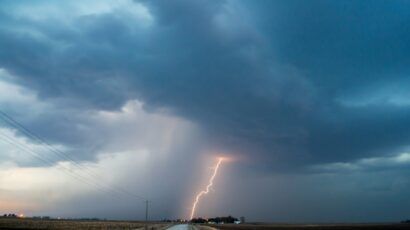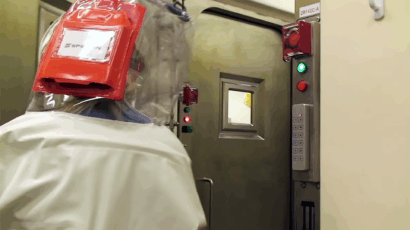Daily update from Japan
By Tatsujiro Suzuki | April 29, 2011
As the situation at Fukushima is becoming less unpredictable, though not yet completely stabilized, and there is more information available, I will stop my daily writings on the nuclear power plant. Thank you very much for your encouragement and warm support.
Sunday, April 24, 4 p.m. ET, Tokyo
Friday, April 29, Tokyo
As the situation at Fukushima is becoming less unpredictable, though not yet completely stabilized, and there is more information available, I will stop my daily writings on the nuclear power plant. Thank you very much for your encouragement and warm support.
Sunday, April 24, 4 p.m. ET, Tokyo
Tokyo Electric Power Company (TEPCO) announced that about 6 meters of water (about half) is already in the containment vessel at unit 1, and that the suppression chambers are also filled with water; thus, its plan to fill the containment vessel with water is underway (unexpectedly). TEPCO also needs to check whether the vessel can withstand the weight of the water.
Thursday, April 21, 8 p.m. ET, Tokyo
The government declared the 20-kilometer evacuation zone as a “no-entry zone” — that is, entry into this area shall be prohibited for all except those carrying out emergency response work. Local mayors have granted temporary entry for one person per household. This does not mean there is a higher risk in the area; rather, it is meant to ensure evacuation and to prohibit re-entry without permission.
Monday, April 18, 12:30 a.m. ET, Tokyo
Tokyo Electric Power Company (TEPCO) announced that the radiation levels — measured by robots — were 10-49 millisieverts per hour at unit 1 and 28-57 millisieverts per hour at unit 3; these levels are considered very dangerous for workers. The robots also measured oxygen levels and temperatures, which were both found to be acceptable.
TEPCO announced that the estimated total of contaminated water is more than 67,000 tons.
Sunday, April 17, 4 p.m. ET, Tokyo
Tokyo Electric Power Company (TEPCO) released a “road map” for stabilization of the Fukushima nuclear plants. The first step (approximately three months) will be to build a cooling system and water treatment facility. The second step (approximately six to nine months) will be to get the reactor and spent fuel under control (cooled status) and to stop the release of radioactive materials (air and water) into the environment.
Saturday, April 16, 1 a.m. ET, Tokyo
Water samples taken from unit 4’s spent fuel pool suggest that the fuel damage could be minor (220 Becquerel (Bq) per cubic meter for iodine 131, and 88 Bq per cubic meter for cesium 134). Still, the water temperature seems to be high, and cooling must continue.
Tokyo Electric Power Company (TEPCO) tried to absorb radioactive materials by putting zeolite into the sea. We shall see how effective this will be.
Wednesday, April 13, 7 p.m. ET, Tokyo
Tokyo Electric Power Company (TEPCO) said that the temperature of unit 4’s spent fuel storage pool is 90 degrees Celsius, which is much higher than the normal temperature (around 40 degrees Celsius). The company also found high radioactivity levels (84 millisieverts per hour) above the pool. The company suspects that fuel could have been damaged, and it is now analyzing water samples from the pool.
Wednesday, April 13, 6 p.m. ET, Tokyo
The Ministry of Education, Culture, Sports, Science and Technology (MEXT) said it found strontium 89 and strontium 90 in the soil and vegetable samples taken from the Fukushima prefecture — 32 Becquerel (Bq) per kilogram for strontium 90 and 260 Bq per kilogram for strontium 89; this is the first time strontium has been detected in the area. There is no regulatory standard in Japan for strontium food contamination. These contamination levels found in Fukushima are much lower than the standards in the US (160 Bq per kilogram) and Europe (750 Bq per kilogram) for strontium 90.
Monday, April 11, 7:30 p.m. ET, Tokyo
Chief Cabinet Secretary Yukio Edano, press conference: The government has established a new evacuation area — called the “planned evacuation area” — where the annual expected dose is estimated to exceed 20 millisieverts. At Namie-cho and the village of Iidate, for example, the cumulative dose has reached 14.48 millisieverts and 8.4 millisieverts. The planned evacuation area includes Katsurao, Kawamata, and part of Minami-Soma. The residents are expected to evacuate in one month.
Monday, April 11, 6 p.m. ET, Tokyo
At 5:16 p.m., another relatively large earthquake hit the Fukushima and Ibaragi area (magnitude 7.1). Tokyo Electric Power Company (TEPCO) reported that external power was lost for units 1-3 and, thus, the cooling capability was lost for a while; the external power was regained at around 6:05 p.m. No other damages have been reported.
Sunday, April 10, 11:30 p.m. ET, Tokyo
Tokyo Electric Power Company (TEPCO) announced that it finished discharging low-level contaminated water to the sea (about 10,000 tons). The company said it is now ready to pump out highly contaminated water (about 60,000 tons) from the basement of unit 2’s reactor building to a condenser, which can hold 3,000 tons; eventually, this water will be pumped to a centralized waste treatment facility which can hold about 30,000 tons. A tanker or mega-float is still needed to store the rest of the water.
Friday, April 8, 6:30 p.m. ET, Tokyo
The impact of last night’s earthquake: For the Rokkasho reprocessing plant and the Higashidori nuclear power plant, external power was lost and emergency diesel power saved the cooling capability. For Onagawa, three out of four external lines were lost, but one survived and maintained the cooling capability. None of the units were in operation, but cooling is needed for the spent fuel pools.
Friday, April 8, 1 a.m. ET, Tokyo
At 11:32 p.m. on April 7, another big earthquake (magnitude 7.4) hit the Miyagi and Fukushima area. As of 12:15 a.m., no damage has been reported at any of the nuclear facilities in the affected area (from Aomori to Ibaragi), except the Onagawa nuclear power plant, where two out of three power lines were lost; one is functioning, however, to ensure cooling capability.
Thursday, April 7, 7 p.m. ET, Tokyo
At 10:30 p.m. on April 6, Tokyo Electric Power Company (TEPCO) started injecting nitrogen into the containment vessel of unit 1 in order to purge hydrogen and oxygen to prevent a possible hydrogen explosion. As of 5 p.m. today, April 7, a total of 410 cubic meters of nitrogen gas has been injected, and they plan to inject a total of 6,000 cubic meters.
The government continues to explore its options for changing evacuation zones based on more detailed monitoring data.
Wednesday, April 6, 1:20 a.m. ET, Tokyo
The Japanese Atomic Energy Commission’s official statement:
Statement on Measures Responding to The Tokyo Electric Power Fukushima Daiichi and Daini Nuclear Accident Caused by the Great East Japan Earthquake
We sincerely express our deep sympathy and condolences for the victims of the Great East Japan Earthquake that hit on March 11, 2011, and for those who have been forced to evacuate or advised to stay inside buildings as a result of the Fukushima Daiichi and Daini nuclear accident.
We are gravely concerned about this accident which can fundamentally undermine public trust in safety measures, not only in Japan but also in other countries.
The situation at the Fukushima Daiichi nuclear power plant continues to be unpredictable, and it requires continuous attention. Therefore, the first priority of the government is to put all our efforts, assembling all knowledge and wisdom of experts in and outside of Japan, to stabilize the situation as soon as possible. In addition, we must take all available measures to assure the safety of local residents who have been forced to evacuate and who have been advised to stay inside buildings that are protected from hazardous radiation from the plants.
We also must take measures to support the well-being of those people. It is also very important to deliver quick and accurate information to the public and to the international community, in a way that the public can understand without difficulty. At the same time, it is necessary to take emergency safety measures for operating nuclear power plants and plants waiting to be started again, and to explain what we are doing to both local governments and the citizens living in the area, who are hosting nuclear power plants.
The Japan Atomic Energy Commission has been hosting a series of meetings since last year for the deliberation of new Framework for Nuclear Energy Policy. Given the current conditions described above, we have decided to suspend this process for the foreseeable future. It is our intention to take appropriate measures when all safety measures necessary are identified comprehensively, based on thorough investigation of the causes of the accident, as well as on the results of a nationwide public debate on overall energy policy.
In the meantime, the Japan Atomic Energy Commission continues to cooperate with those who are directly involved in emergency measures mentioned above, and to make necessary decisions on issues associated with the accident, regarding research, development, and utilization of atomic energy while listening to the opinions and proposals of the public.
Tuesday, April 5, 7 p.m. ET, Tokyo
Sea contamination is a source of concern now.
Tokyo Electric Power Company (TEPCO) detected a very high contamination level of iodine 131 (800,000 Bq per cubic meter; this is 7.5 million times the regulated level) and cesium 134 (120,000 Bq per kilogram; this is 2 million times the regulated level) near unit 2.
TEPCO is now considering placing a temporary fence in the sea to contain water, and also placing water-glass beneath the pit, where the source of the leak is suspected to exist.
Tuesday, April 5, 6:30 p.m. ET, Tokyo
Fish contamination is now emerging. The Ibaraki fish association announced it detected a high contamination level of iodine 131 (4,080 Bq per kilogram) and cesium 137 (526 Bq per kilogram). The Ministry of Health and Welfare is now assembling an advisory committee to establish safety standards for radioactive contamination (only temporary standards exist now).
Tuesday, April 5, 6 p.m. ET, Tokyo
The Japan Atomic Energy Commission (JAEC) announced its decision to suspend its deliberation process for a new framework for nuclear energy policy, which has been underway since last December. The commission said that this accident is one of grave concern as it can undermine public trust in safety measures fundamentally.
Monday, April 4, 8 p.m. ET, Tokyo
Chief Cabinet Secretary Yukio Edano, press conference: The government has announced criteria for removing food from the restricted food list. In local areas, food will be tested every week, and it will be removed from the list only when it passes three consecutive times. The government said that it will continue to inspect the food for one week after the food’s removal from the list.
Monday, April 4, 7 p.m. ET, Tokyo
Tokyo Electric Power Company (TEPCO) announced that it plans to release about 11,500 tons of contaminated water (low radioactivity level: iodine 131 at 1.6-20 Bq per cubic centimeter) into the sea; this must be done in order to save space for treating and storing highly contaminated water from unit 2. This is approved by the Nuclear Industry and Safety Agency (NISA) and the Nuclear Safety Commission (NSC) as an emergency measure since the potential dose to the public is estimated to be 0.6 millisieverts per year, which is 25 percent of the annual dose limit of 2.4 millisievert.
(Editor’s Note: This post was updated after it was originally published.)
Sunday, April 3, 6 p.m. ET, Tokyo
Chief Cabinet Secretary Yukio Edano, press conference: The government thinks it is unlikely that evacuations will be resolved soon; new measures are being considered for people who need to stay away from home for a longer period of time (i.e. for months). Some may be allowed to return and some may not. Careful monitoring and assessments are now being done.
Sunday, April 3, 5:30 p.m. ET, Tokyo
Tokyo Electric Power Company (TEPCO) reported that their two missing employees were found dead in the turbine building of unit 4; their cause of death seems to be from the tsunami, rather than the nuclear accident.
The government conducted a survey of more than 900 children (0-15 years old) at two villages within the 30-kilometer zone of the Fukushima Daiichi nuclear power plant, and have not yet detected a higher-than-regulated level of exposure of iodine.
Sunday, April 3, 12:30 a.m. ET, Tokyo
There is good news. The second test by the International Atomic Energy Agency (IAEA) shows that the Iitate village is safe. New cooling pumps have been installed for all four units. The environmental radioactivity level has been consistently declining. Feel a little better, though it is not yet time to relax.
Saturday, April 2, 3:30 p.m. ET, Tokyo
Tokyo Electric Power Company (TEPCO) and Nuclear Industry and Safety Agency (NISA) press conference: A 20-centimeter crack was found in the “pit” wall of unit 2 (where cooling seawater is flowing into the reactor building). Highly contaminated water was detected in the pit (1,000 millisieverts per hour), and this water is leaking into the sea. Currently, TEPCO is trying to shield the crack; they do not know how long it has been leaking and where the water is coming from.
Confirmation: The “mega-float” mentioned in yesterday’s update is intended for storing “contaminated water” not “pure water” (which is carried by the US Navy).
Friday, April 1, 1:30 a.m. ET, Tokyo
The Tokyo Electric Power Company (TEPCO) announced that it will use the city of Shizuoka’s mega-float to store water — reportedly, it has the capacity to hold about 10,000 tons of water. So far, 7,396 tons of water has been pumped into the spent fuel pools. (This is not an April’s fool joke.)
Thursday, March 31, 7:30 p.m. ET, Tokyo
Yesterday, the International Atomic Energy Agency (IAEA) reported that the concentration level of iodine 131 and cesium 137 exceeded their recommended level for evacuation in one area (Iitate village). They advised the Japanese government to carefully assess the situation; the Japanese government indicated that they are doing so. Read here.
Wednesday, March 30, 7 p.m. ET, Tokyo
Tokyo Electric Power Company (TEPCO) chairman stated that it is probably unavoidable to close down units 1-4. The government confirmed that they are exploring all options, including using a special sheet (not explained) to cover the buildings of units 1-4 and using tankers to store contaminated seawater.
Wednesday, March 30, 12:30 a.m. ET, Tokyo
A piece of good news. The lights are back on in the control room of unit 4; now all control rooms in each unit are with power. Still, there has been little progress in pumping out the contaminated water, and a reduced inflow rate of water to reactors resulted in increased temperatures. Again, a careful balance is needed.
Tuesday, March 29, 12:30 a.m. ET, Tokyo
Tokyo Electric Power Company (TEPCO) reported that plutonium (plutonium 238, plutonium 239, and plutonium 240) was found in soil samples taken from five spots within the site. The radioactivity level is the same level as that of fallout from nuclear tests; however, it is believed that two out of the five samples, which detected plutonium 238, are believed to come from this accident.
Monday, March 28, 5 p.m. ET, Tokyo
The Nuclear Safety Commission said that the contaminated water found at unit 2 came directly from the reactor vessel, as its radioactivity level is much higher than the monitored levels at units 1 and 3. The commission also stated that the biggest concern is its leakage into the ground and seawater, and thus recommended to strengthen monitoring efforts.
Monday, March 28, 11 a.m. ET, Tokyo
Correction
Tokyo Electric Power Company (TEPCO) released new information late last night that reports it was cesium 134 — not iodine 134 — and it was 2.3 million Becquerel (Bq) per cubic meter. Still, repair efforts have been suspended due to high radiation.
Mistakes could be fatal. Hope the operation team’s high spirit remains unchanged.
Sunday, March 27, 11 p.m. ET, Tokyo
Tokyo Electric Power Company (TEPCO) announced that the data on the high concentration of radioactive iodine 134, which was published this morning, was found to be wrong. They will announce the new data later. The previous data, experts pointed out, suggests that the core is critical.
Sunday, March 27, 1:30 p.m. ET, Tokyo
The level of water contamination found at unit 2 is higher than that at units 1 and 3. The concentration of radioactive iodine 134 (half-life is only 53 minutes) was 2.9 billion , 13 million Bq per cubic meter for iodine 131 (8 days), and 2.3 million Bq per cubic meter for cesium 134 (2 years).
The water surface radiation level is higher than 1 sieverts per hour. The urgent tasks are pumping out the water and stopping the water leak.
Sunday, March 27, 1:30 a.m. ET, Tokyo
The Nuclear Industry and Safety Agency (NISA) reported that a seawater sample taken near the plant shows an extremely high concentration of iodine 131 (50 Becquerel per cubic meter (around 1,250.8 times the regulated level)). This is a big increase from yesterday (around 200 times the regulated level). Apparently, damaged fuel is contaminating the water.
Power has been restored in the control room of unit 2, and efforts are underway to pump out the contaminated water.
Saturday, March 26, 1:30 a.m. ET, Tokyo
Tokyo Electric Power Company (TEPCO) reported that contaminated water was found in units 1 and 2. Where the water came from is not certain, but it contains cesium 137, iodine 131, and cobalt 60, which seemed to come from damaged nuclear fuel in reactors, and not from the spent-fuel pool. High radioactivity has slowed down the repair work.
Friday, March 25, 2 p.m. ET, Tokyo
Chief Cabinet Secretary Yukio Edano, press conference: The government will offer “voluntary evacuations” for residents living within 20 and 30 kilometers of the Fukushima Daiichi nuclear plant (currently, these residents are advised to stay indoors).
The Nuclear Safety Commission endorses this government decision, as radiation levels are unlikely to decline for some time; the commission maintains that there is no immediate danger to the public.
Thursday, March 24, 7 p.m. ET, Tokyo
Tokyo Electric Power Company (TEPCO) reported that three people, who were working in the turbine building of unit 3, suffered radiation exposure between 170 millisieverts and 180 millisieverts. Two suffered beta ray skin burns and were immediately transferred to a hospital. The dose limit for emergency work is now set at 250 millisieverts (amended from 100 millisieverts).
These are the first serious radiation-exposed injuries during this crisis. Feel for them.
Thursday, March 24, 12 p.m. ET, Tokyo
Nuclear Industry and Safety Agency (NISA) press conference: At unit 1, the reactor temperature increased to 400 degrees Celsius (752 degrees Fahrenheit); more sea water was added, bringing the reactor temperature down to 243 degrees Celsius (469 degrees Fahrenheit). This injection of sea water resulted in increased pressure: 0.385 megapascals at 5 a.m. today, March 24, compared to 0.250 megapascals on March 23. The injection water rate has been reduced to 160 liters per cubic meter from 178 liters per cubic meter. A careful balance is needed.
The black smoke spotted at unit 3 is now gone, and storage-pool cooling efforts are in progress at units 3 and 4.
Wednesday, March 23, 10:30 p.m. ET, Tokyo
Black smoke was observed at unit 3; this forced workers to evacuate and terminate their efforts to recover power to this unit. The reason for the smoke is not yet known.
A high radiation level (500 millisieverts per hour) was detected in the basement at unit 2, making work at the unit very difficult.
Wednesday, March 23, 5 p.m. ET, Tokyo
Chief Cabinet Secretary Yukio Edano, press conference: The Tokyo metropolitan government announced that tap water is contaminated. At 210 Becquerel per kilogram, the concentration of iodine 131 is about twice the regulated level for infants (100 Becquerel per kilogram), and infants should not consume this tap water.
The preliminary results of public exposure simulation have been published, which suggest some people may be exposed to more than 100 millisieverts (for thyroid gland) beyond the 30 kilometer zone. Further analysis is needed.
Wednesday, March 23, 11 a.m. ET, Tokyo
Chief Cabinet Secretary Yukio Edano, press conference: The food restriction is expanding: In addition to spinach and milk, other vegetable varieties (e.g. broccoli, cabbage, parsley, etc.) are no longer allowed to be distributed from the Fukushima and Ibaraki prefectures. Some samples report 80 times of cesium 137, and 12 times of iodine 131 concentration. Even if these levels will not pose immediate health risks, the emerging contamination issue is a source of concern.
Wednesday, March 23, 12 a.m. ET, Tokyo
Tokyo Electric Power Company (TEPCO) reported that power has been restored in the control room of unit 3. This is a significant step toward a recovery of full cooling capability. Unit 4 is also connected to the grid. This is good news.
Tuesday, March 22, 7 p.m. ET, Tokyo
Tokyo Electric Power Company (TEPCO) press conference: Even at a greater distance — 16 kilometers from the plant — there is a higher-than-regulated level of iodine 131 (80 times the regulated level at 8 kilometers; 27 times at 10 kilometers; 16 times at 16 kilometers) and cesium 134 (1.3 times the regulated level at 8 kilometers away). Cobalt 58 was also detected but below regulated level.
Tuesday, March 22, 11:30 a.m. ET, Tokyo
Nuclear Industry and Safety Agency (NISA) press conference: The smoke that was detected from units 2 and 3 is gone, and the radiation level is also down. Power recovery efforts for unit 2, as well as watering efforts on the storage pool of unit 4, are now underway.
Tokyo Electric Power Company (TEPCO) reported that a higher-than-regulated level of iodine 131, cesium 134, and cesium 137 was detected from seawater near the plant (about 100 meters). Cobalt 58 was also detected (330 meters away) but below regulated level. Although this does not pose immediate health risks to the public, environmental monitoring activities now will be expanded to the surrounding sea area.
Monday, March 21, 6 p.m. ET, Tokyo
Chief Cabinet Secretary Yukio Edano, press conference: The first restriction-order has been issued for some foods (spinach and milk) in Ibaraki, Tochigi, Gunma, and Fukushima prefectures. These foods are no longer allowed to be distributed from these areas.
Experts stress that no immediate public health risk exists even if these foods are consumed for a short period of time. Still, this illustrates that food contamination may be becoming real.
Monday, March, 21, 12:30 p.m. ET, Tokyo
Nuclear Industry and Safety Agency (NISA) press conference: 1,137 tons of sea water was poured into the storage pool of unit 3, and about 90 tons of tank water (not sea water) was poured into the storage pool of unit 4. Units 1, 2, 5, and 6 are now connected to the grid; the current priority is unit 2 to test, check, and replace parts as necessary. Power may be recovered this afternoon in unit 2’s control room. It may take a few days to complete the power recovery.
Sunday, March 20, 6 p.m. ET, Tokyo
Chief Cabinet Secretary Yukio Edano, press conference: Pressure inside until 3’s containment vessel has been stabilized; thus, venting has not been necessary so far and efforts to restore power have not been interrupted. Meanwhile, food contamination (spinach from Ibaraki prefecture, milk from Fukushima prefecture) was reported again. No immediate risk, but more careful monitoring is needed.
It is possible that there may be a restriction on food distribution.
Sunday, March 20, 12:30 p.m. ET, Tokyo
Nuclear Industry and Safety Agency (NISA) press conference: There is increased pressure inside the containment vessel of unit 3; the decision was made to vent the steam from the vessel, which will result in higher radioactivity levels.
The reasons for this increase in pressure are not yet known. This development may stop the current efforts of spraying water on the storage pools, as well as efforts of recovering power.
Sunday, March 20, 12 p.m. ET, Tokyo
TEPCO press conference: The special rescue team and the Special Defense Forces spent more than 10 hours spraying water, and their heroic efforts seem to have a positive impact. Radiation level near the plant (500 meters away) decreased from 3,443 microsieverts per hour last night to 2,625 microsieverts per hour this morning. Meanwhile, Ibaraki prefecture announced it would stop distributing spinach. Food contamination issue is now emerging.
Sunday, March 20, 1 a.m. ET, Tokyo
Situation on the site is getting better, but food issue is emerging.
The 1,200 tons of water sprayed on the storage pool of unit 3 seems to be having a positive impact. The Nuclear Industry and Safety Agency (NISA) reported that, 500 meters from the plant, the radiation level decreased from 3,443 microsieverts per hour to 2,906 microsieverts per hour; however, detailed analysis is still needed.
Meanwhile, units 1 and 2 are now connected to the grid. The equipment needs to be checked whether it is in working order.
Saturday, March 19, 4:30 p.m. ET, Tokyo
Press conference: Confirmed reports of first food contamination of spinach (from Ibaraki prefecture) and milk (from Fukushima prefecture). More sampling is needed to determine how the food contamination is spread. The level — although it is beyond food safety standards — is still not harmful to public health; the total exposure level is about one CT scan (around 6.9 millisieverts) if consumed over one year.
Saturday, March 19, 4 p.m. ET, Tokyo
Defense Ministry press conferece: Pictures taken by the infrared censor camera suggest that the surface temperatures of units 1,2,3, and 4 are all below 100 degrees Celsius (212 degrees Fahrenheit). This is good news. Currently, water is continuously being sprayed (unmanned operation) on the storage pool of unit 3. A total of more than 1,200 tons will be poured. I hope it will cool down the pool for a while.
Saturday, March 19, 2 p.m. ET, Tokyo
Last night 60 tons of water was poured on the storage pool of unit 3, and plans are underway to water continuously for seven hours or longer this afternoon. It has been confirmed that there is water in the storage pool of unit 4. For unit 5 and unit 6: Power has been recovered and so has the cooling capability. There are no major changes in other reactors (units 1-3) and radiation monitoring.
Friday, March 18, 11:45 p.m. ET, Tokyo
A total of about 60 tons of water was sprayed over the 1,300 ton storage pool of unit 3 tonight. Meanwhile, efforts to restore power are underway. Once power is restored, cooling capability could be significantly improved, assuming necessary equipments can work. There is hope now.
Friday, March 18, 4:50 p.m. ET, Tokyo
Press conference: One week after the earthquake. This afternoon, 50 tons of water was poured on the unit 3 pool. It is confirmed that water was successfully poured, but its effectiveness is not known yet. Efforts to restore power are still underway. Radiation monitoring data is showing steady decline in most places; this is good news.
Monitoring data is available now. And for those in Japan.
Together, we make the world safer.
The Bulletin elevates expert voices above the noise. But as an independent nonprofit organization, our operations depend on the support of readers like you. Help us continue to deliver quality journalism that holds leaders accountable. Your support of our work at any level is important. In return, we promise our coverage will be understandable, influential, vigilant, solution-oriented, and fair-minded. Together we can make a difference.
Topics: Columnists, Nuclear Energy















